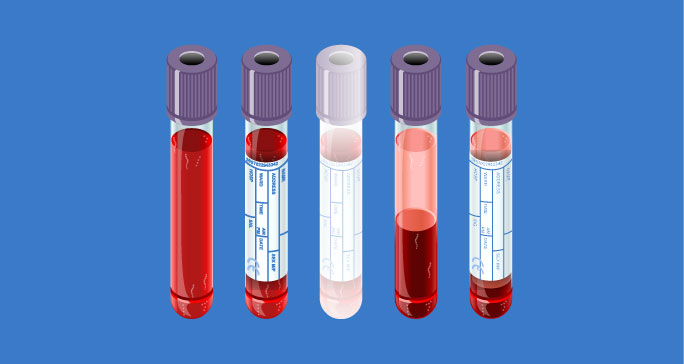- Diseases
- Acoustic Neuroma (16)
- Adrenal Gland Tumor (24)
- Anal Cancer (70)
- Anemia (2)
- Appendix Cancer (18)
- Bile Duct Cancer (26)
- Bladder Cancer (74)
- Brain Metastases (28)
- Brain Tumor (234)
- Breast Cancer (728)
- Breast Implant-Associated Anaplastic Large Cell Lymphoma (2)
- Cancer of Unknown Primary (4)
- Carcinoid Tumor (8)
- Cervical Cancer (164)
- Colon Cancer (168)
- Colorectal Cancer (118)
- Endocrine Tumor (4)
- Esophageal Cancer (44)
- Eye Cancer (36)
- Fallopian Tube Cancer (8)
- Germ Cell Tumor (4)
- Gestational Trophoblastic Disease (2)
- Head and Neck Cancer (14)
- Kidney Cancer (130)
- Leukemia (342)
- Liver Cancer (50)
- Lung Cancer (286)
- Lymphoma (278)
- Mesothelioma (14)
- Metastasis (30)
- Multiple Myeloma (100)
- Myelodysplastic Syndrome (60)
- Myeloproliferative Neoplasm (6)
- Neuroendocrine Tumors (16)
- Oral Cancer (102)
- Ovarian Cancer (178)
- Pancreatic Cancer (162)
- Parathyroid Disease (2)
- Penile Cancer (14)
- Pituitary Tumor (6)
- Prostate Cancer (150)
- Rectal Cancer (58)
- Renal Medullary Carcinoma (6)
- Salivary Gland Cancer (14)
- Sarcoma (238)
- Skin Cancer (302)
- Skull Base Tumors (56)
- Spinal Tumor (12)
- Stomach Cancer (66)
- Testicular Cancer (28)
- Throat Cancer (92)
- Thymoma (6)
- Thyroid Cancer (100)
- Tonsil Cancer (30)
- Uterine Cancer (86)
- Vaginal Cancer (18)
- Vulvar Cancer (22)
- Cancer Topic
- Adolescent and Young Adult Cancer Issues (22)
- Advance Care Planning (12)
- Biostatistics (2)
- Blood Donation (18)
- Bone Health (8)
- COVID-19 (360)
- Cancer Recurrence (120)
- Childhood Cancer Issues (120)
- Clinical Trials (628)
- Complementary Integrative Medicine (22)
- Cytogenetics (2)
- DNA Methylation (4)
- Diagnosis (240)
- Epigenetics (6)
- Fertility (62)
- Follow-up Guidelines (2)
- Health Disparities (14)
- Hereditary Cancer Syndromes (128)
- Immunology (18)
- Li-Fraumeni Syndrome (8)
- Mental Health (122)
- Molecular Diagnostics (8)
- Pain Management (62)
- Palliative Care (8)
- Pathology (10)
- Physical Therapy (18)
- Pregnancy (18)
- Prevention (940)
- Research (390)
- Second Opinion (78)
- Sexuality (16)
- Side Effects (616)
- Sleep Disorders (10)
- Stem Cell Transplantation Cellular Therapy (216)
- Support (408)
- Survivorship (330)
- Symptoms (182)
- Treatment (1794)
Ministrokes and cancer: 9 questions answered
7 minute read | Published September 26, 2023
Medically Reviewed | Last reviewed by an MD Anderson Cancer Center medical professional on September 26, 2023
Transient ischemic attacks (TIAs) or “ministrokes” are temporary blockages caused by clots in the blood vessels that supply the brain. Usually, any problems that result from them are temporary and resolve on their own fairly quickly. But TIAs can also be a warning sign of more severe and debilitating strokes.
To learn more about ministrokes, why some cancer patients can be at greater risk for them, and how they’re treated and prevented, we talked with neuro-oncologist and McNair Scholar Chirag Patel, M.D., Ph.D.
What’s the difference between a ministroke and a ‘regular’ stroke?
Just as heart attacks result from a blockage of blood flow to the heart muscle, strokes and ministrokes result from a blockage of blood flow to the brain. This blockage can occur either in the brain itself or in one of the major arteries in the neck that provide blood supply to the brain.
The only difference between the two is that physical and neurological deficits caused by TIAs are usually temporary and tend to resolve on their own within a matter of minutes or hours. Those caused by severe strokes, on the other hand, tend to be long-lasting and require physical, occupational, and/or speech therapy, depending on which part of the brain is affected.
What causes ministrokes?
The biggest risk factors are:
- hypertension (high blood pressure)
- atrial fibrillation (irregular heartbeat)
- high cholesterol
- diabetes
- patent foramen ovale (PFO): This is a condition in which the naturally occurring hole between the left and right sides of the heart in a developing fetus doesn’t close on its own — or doesn’t close completely — within a few weeks of birth.
Blood clots that develop in the veins of someone with a PFO can cross over and go directly into the arteries that feed the brain.
Why are cancer patients at greater risk of ministrokes?
The main factor is the thickness or “stickiness” of the blood. Both cancer itself and some of the drugs used to treat it can change the properties of blood. This causes certain components to increase in number and make blood more “sticky.” That can increase the odds that someone will develop a blood clot, leading to a stroke or a ministroke.
Some cancer patients are also physically weak and unable to move around as much as they normally would. When you combine limited mobility with blood stickiness, it further increases the risk of blood clots. It’s like going on a long flight or car ride and not getting up to stretch your legs every now and again to promote blood flow.
What symptoms of ministrokes should patients look out for?
We often use the acronym “FAST” to check for visual signs of impairment from both mini- and regular strokes. The letters stand for:
- Facial droop: Does one side of someone’s face appear to be hanging slack? Is their smile uneven? Ask if one side of their face feels numb.
- Arm weakness: Have the person raise both arms above their head and see if one starts drifting down because they can’t hold it up for more than 10 seconds. Strokes and ministrokes usually affect only one side of the body.
- Speech difficulty: Is someone having trouble communicating or not making any sense? Slurred speech can indicate a problem with controlling the mouth muscles. Not being able to answer questions or giving nonsensical answers can indicate a problem with information processing or speech generation.
- Time to call 911: Both ministrokes and regular strokes are considered emergencies and need immediate attention. Call 911.
How are ministrokes treated?
The FAST acronym is particularly appropriate with strokes and ministrokes. That’s because some therapies can only be used safely to reverse symptoms if they’re administered within a certain time frame.
The first thing we’ll do is administer the National Institute of Health’s (NIH) stroke scale assessment. It helps us figure out where the stroke is happening in the brain.
Once we know where the problem is, we can start taking steps to minimize the damage and to prevent any that’s already occurred from getting worse. Even in the acute phase, our first goal is to reduce harm.
After that, our goal is to prevent the next TIA or stroke. Data show that 20% to 30% of patients who experience a TIA will go on to have a stroke within the next three months. And half of those will happen within the next two days. So, we look to manage risk factors.
Often, that will involve some combination of:
- lowering cholesterol immediately
- treating diabetes
- performing an echocardiogram with a “bubble” study to check for a PFO
- performing blood vessel imaging of the neck and brain
- monitoring heart rhythm over time
- controlling blood pressure immediately for bleeding strokes and in a purposefully delayed manner (permissive hypertension) for ischemic strokes
- giving blood thinners (anti-platelet agents or anticoagulants) depending on the underlying cause of the stroke
Which methods we use will depend on the individual patient and the type of stroke they had.
What are the two types of strokes, and how does the type affect treatment?
About 80% of all strokes are “ischemic.” This means they’re caused by an arterial blockage that prevents blood from getting to a particular part of the brain. The rest are considered “hemorrhagic,” or bleeding strokes, because they involve a blood vessel that has burst, allowing the blood to spill into the brain. All TIAs are by definition ischemic.
It’s sometimes difficult to distinguish between ischemic and hemorrhagic strokes by neurological examination alone. It’s important to get to an emergency room ASAP so that an initial brain scan can be done. The brain scan results will dictate the treatment.
If patients on blood thinners experience a hemorrhagic stroke, the doctor will attempt to reverse the effects of the blood thinner(s) to slow down the rate of bleeding. These patients will also have their blood pressure normalized. This helps reduce the rate of bleeding into the brain, which is vital since the space occupied by the blood compresses the brain.
With larger hemorrhagic strokes, patients may be at risk of brain herniation, which can be fatal. A neurosurgeon will evaluate such patients to determine if they need surgery to remove a portion of their skull, taking pressure off the brain. Patients with hemorrhagic strokes are usually admitted to the ICU and monitored around the clock since they’re at risk for seizures and worsening neurological deficits. Patients who experience seizures from their hemorrhagic stroke will be prescribed anti-seizure medications.
If a patient with an ischemic stroke can get to the emergency room within three hours of their first symptoms (and within 4.5 hours for certain patients), we might be able to administer tissue plasminogen activator (tPA). It’s a clot-busting drug with a very high success rate of reestablishing blood flow. I’ve seen patients who can’t speak or move one side of their body be back to normal within 30 minutes of receiving tPA.
How likely are cancer patients to experience ministrokes?
Most data show that about 15% of cancer patients will experience a TIA or a stroke throughout their lifetime. Interestingly, about 10% of patients who are hospitalized for a stroke also have cancer.
Can patients do anything to reduce their own risk of stroke and ministrokes?
Absolutely.
- Don’t smoke or vape: And, if you do, stop now. Those activities can harden the blood vessels, which makes both strokes and ministrokes more likely. Medication and counseling are the best ways to quit smoking. You can call 1-800-784-8669 or text QUIT to 47848. Cancer patients may also join MD Anderson’s Tobacco Research and Treatment Program.
- Get some exercise: Aerobic activity is critical to reducing the risk of all types of strokes. And walking is a great and simple option. If it’s super-hot and you don’t want to go outside, walk around a mall or an office building, or anywhere that’s well-air-conditioned.
- Eat a Mediterranean diet: A diet high in fish, veggies and nuts can reduce the risk of a second stroke.
- Talk to your doctor: If you have a family history of diabetes or high cholesterol, they might recommend more frequent checkups, testing, and/or adjusting medications/doses. If you feel like your heart is beating irregularly, you should mention this to your doctor, so they can evaluate you for atrial fibrillation.
What’s the most important thing you want people to know about ministrokes?
Sometimes, just hearing the word “mini” used before the word “stroke” leads people to think that TIAs are not as dangerous or as bad as regular strokes. But that’s not true. Ministrokes are still considered emergencies because they stem from the same risk factors that cause ischemic strokes. So, underestimating the seriousness of a ministroke would be a mistake.
Don’t minimize your stroke or ministrokes symptoms. We realize that cancer patients already have a lot on their plates, but report any issues you’re experiencing to your doctor immediately so that they can be assessed.
It’s also really important to stay on any medications you’re prescribed. For example, missing even a single dose of an anti-coagulant (a specific type of blood thinner) after having a stroke due to a venous blood clot in patients with a PFO can lead to another stroke the very next day. So, it’s critical to take medications exactly as prescribed and not miss any doses. The first 48 hours after a stroke or ministroke are particularly vital to your life and recovery.
Request an appointment at MD Anderson online or by calling 1-855-943-1920.
Related Cancerwise Stories

Both cancer and some of the drugs used to treat it can change the properties of blood.
Chirag Patel, M.D., Ph.D.
Physician & Researcher





